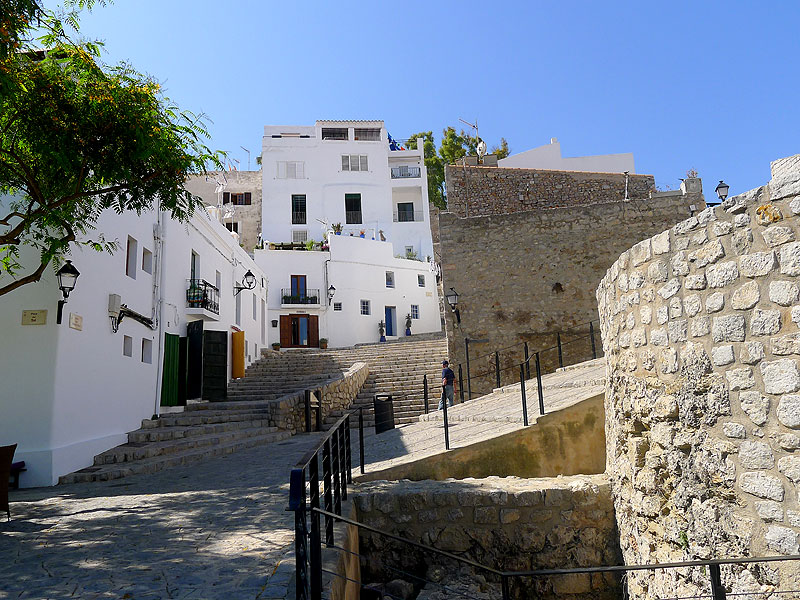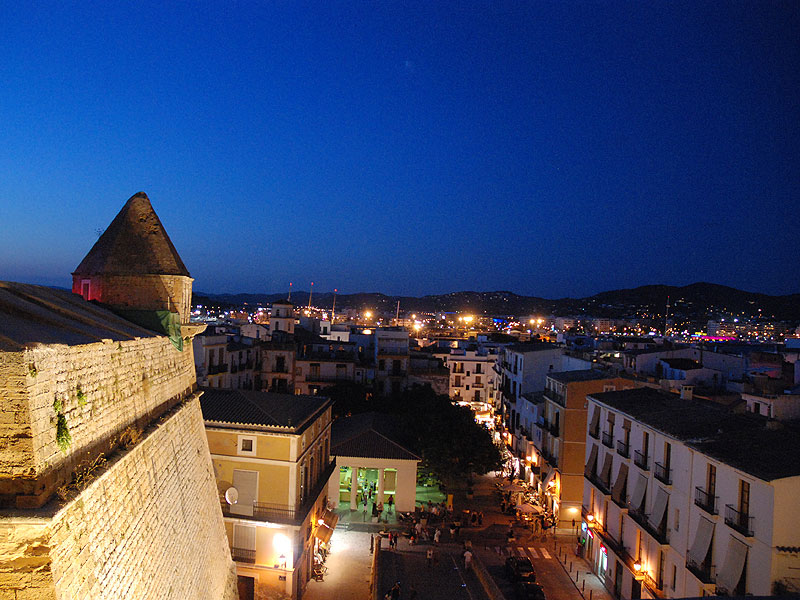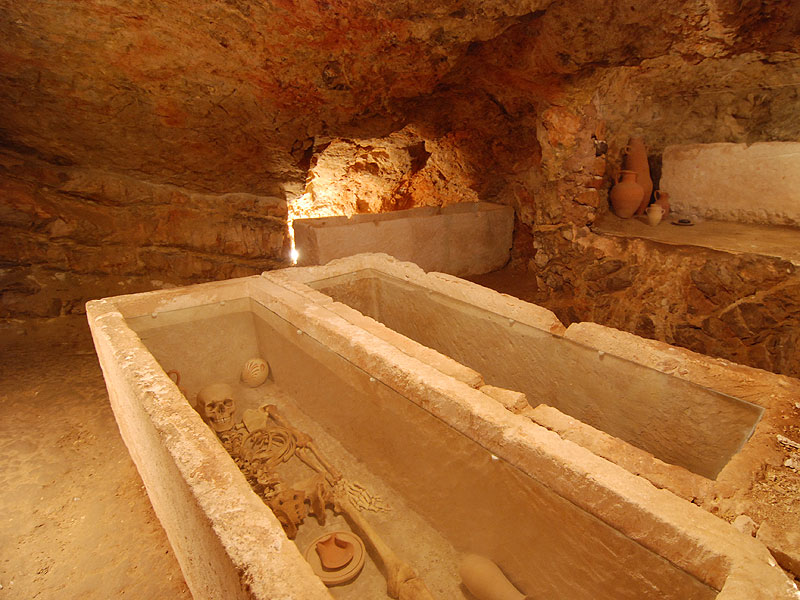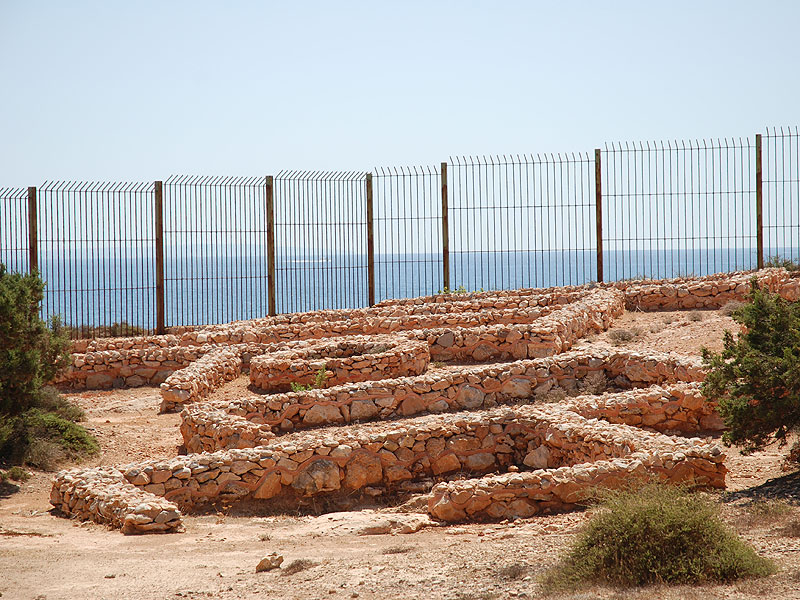On 4 December 1999, UNESCO included the category Ibiza, Biodiversity and Culture in its World Heritage collection. Thus the Pitiusas Islands became a member of this exclusive international club, of which Spain is the member with the greatest number of assets.
Dalt Vila

The ancient city was developed from the first Phoenician settlement in El Puig de Vila. According to classical texts, Aiboshim, the city of Bes, was founded in 654 BC. Throughout the Punic period, it was a very lively trading centre that exported products manufactured in numerous points of the Mediterranean. It enjoyed political and commercial autonomy, which grew during its period as a confederated city of Rome.
In the 10th century, Medina Yabisah was part of the territories of El Al-Andalus. This period of Arab domination left deep marks on the city and the entire island.
On August 8th 1235, the Catalan troops of Jaume I conquered the island, introducing Christianity, western culture and installing a feudal system. In 1299, the king of the Catalan-Aragonese crown, Jaume II, created la Universitat (Town Council), a system of self-governance which was maintained until 1717.
In mediaeval times, new buildings arose, of both a civil and a religious nature, and the 15th century was a golden era which was consolidated with the appearance of new houses and other constructions with renaissance decorative features. The 16th-century attacks on the city and the island by the Turkish armada showed up the weakness of the old mediaeval walls, and they were finally replaced by the renaissance bastioned site, which is still preserved.
The Dalt Vila site that was declared World Heritage currently offers a great number of options for strolling along its historic streets. The explanatory panels enable you to understand what Dalt Vila was like in the past.
The Reinassance city walls

There have always been city walls in the city of Eivissa, in the classic period and in mediaeval texts they are described as strong and powerful, but after the 15th century, they were no longer useful for defending the city in the face of modern weapons and in 1555, Carlos I and Felipe II promoted their renovation and fortification.
The project was designed by the engineer Giovanni Battista Calvi. Initially six bastions were constructed following initially six bastions were constructed. Calvi left the island and in 1575, the Crown engineer, Jacobo Paleazzo Fratin, took over responsibility for the works. He modified the original project as a district had grown up outside the city walls on El Puig de Santa Llúcia, and he considered it would be wise to protect it. So he redirected the Sant Joan bastion and constructed a new one, that of Santa Llúcia, and opened the main entrance to the fort in the part that joined the two bastions: Porta del Mar or Porta de ses Taules.
This huge main entrance is flanked by two Roman statues and above the entrance arch there is a large commemorative stone plaque with the arms of Felipe II, the city shield and an inscription which gives the date 1585, a year that does not correspond to the completion of the site, as during the last decade of the 16th century, work continued, this time directed by the engineer, Antonio Saura.
The Punic necropolis of El Puig des Molins

It is the largest and best-preserved necropolis in the world. Located on the Puig des Molins, and it was the cemetery for the city of Eivissa during ancient times.
It is located 500 metres to the to the west of the Puig de Vila, in the same place the city has been since its foundation by the Phoenicians at the end of the 7th century BC. As was usual in Phoenician cities, the place for the living and the place for the dead were close by, though separated by a geographical accident. Its name comes from the windmills that dominated the hill from at least the 15th century, currently in disuse and of which only a few remainThe poet Rafael Alberti and his wife Mª Teresa León lived in one of these windmills for some days during their stay on the island in July 1936, just when the Spanish Civil War broke out.
The original cemetery, set up at the end of the 7th century BC by the Phoenicians, occupied a specific area on the bottom of the hillside and underwent enormous growth due to the expansion of the city in the Punic and Roman periods.
Later, the land was used for agricultural purposes. The hillside was divided into terraces on which olive, almond, carob and fig trees were planted, and the windmills were constructed.
Currently, the hillside is part of the Archaeological Museum of Eivissa and Formentera. The mount is covered by a thick layer of bushes, but it is calculated that just counting the tombs from the Punic period, the hypogeal ones, there are some 3.000. The Museum displays many works that can be admired, although one stands out more than most: Hellenistic Greek traditional earthenware representing the feminine bust of the goddess Tanit, a real icon of the island.
Phoenician site of Sa Caleta

Sa Caleta is the popular name of a port with dry dock huts for small fishing boats, on the south-southwest coast of Eivissa, between the northwesterly point of the large beach of Es Codolar and the Puig des Jondal. On Sa Caleta peninsula, it is likely that Phoenicians from the Iberian peninsula settled progressively from the 8th century BC until converting the whole space into a great urban centre throughout the 7th century BC.
Today, the Sa Caleta site offers one of the most suggestive schemes with regard to the kind of ancient western Phoenician houses which are known today. It is a system of juxtaposition of elements, as per needs, without a planned layout and with an organisation as if the space had been shared between the settlers.
The communal elements include the large ovens, probably for cooking bread and sandstone mills, possibly for milling grain. There is pottery modelled into different shapes, such as amphorae, jugs and pitchers, plates, lamps and other bronze utensils for cooking. Other elements have also been found, such as bronze hooks, which show the presence of fishing, and woven pieces, showing that fabric was mad.
However, without a doubt, metal work was the activity that occupied the most relevant place in the economic activities of the Phoenicians of Sa Caleta. Remains of the mineral, argentiferous galena, have been found, which was smelted in the settlement to obtain lead, but there are also indications of its transformation for extracting silver. Ironwork has also been found, which was dealt with in specific ovens. The minerals, in particular the galena, were probably obtained by the Phoenicians on the east of the peninsular and on the Catalan coasts, here they exchanged it for products such as wine, oil and other things. One of the elements of the Phoenician economy was the exploitation of salt; the sttlement is very close to the important natural salt marshes of Eivissa.
In about 600 BC, they definitively abandoned Sa Caleta, and settled in the bay of Eivissa, where they founded the city of Eivissa, a place that was better suited to their expectations of organisation and growth.
The declaration of Sa Caleta as World Heritage reflects the great importance of the settlement as a predecessor to the current city, and it great historic meaning. With the foundation of the settlement at Sa Caleta, the Balearic Islands entered history and modernity. The Phoenicians brought new, unknown concepts to the island, such as town-planning, pottery turned on a wheel, iron metal works or writing, among others.
